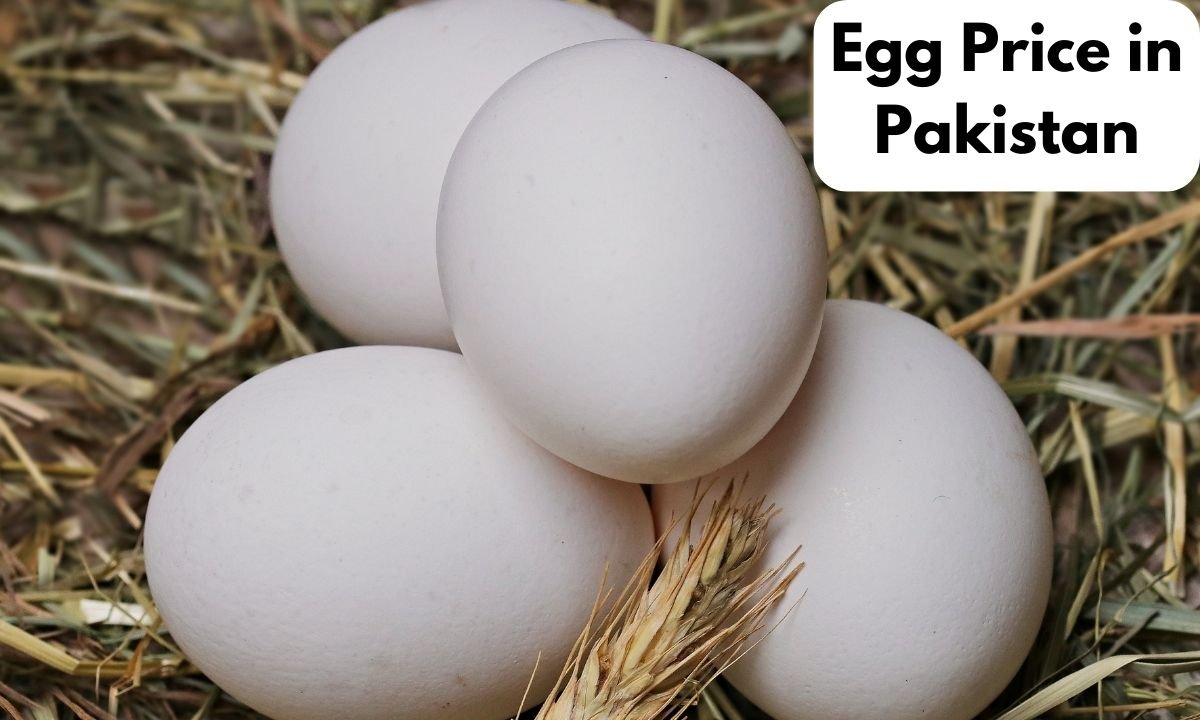Egg Price in Pakistan (Latest Guide)
In the lively markets of Pakistan, the cost of eggs has become a significant concern. By late December 2023, in Karachi, a dozen large eggs are priced at ₨293. Contrastingly, in Islamabad, the rates have climbed to an unprecedented ₨430 for a dozen. Eggs, being a fundamental food item for many in Pakistan, hold considerable importance for the nation’s economy.
Various elements, such as demand and supply, the expenses related to feed, and inflation, influence their pricing. Grasping these elements becomes essential for anyone aiming to understand the egg market and predict upcoming price shifts.

Current Egg Prices Across Major Pakistani Cities
| City | Retail Price (1 dozen) | Wholesale Price (1 Peti) |
| Karachi | ₨370 | ₨10830 |
| Lahore | ₨359 | ₨10650 |
| Islamabad | ₨430 | ₨12500 |
| Rawalpindi | ₨400 | ₨12500 |
| Gujranwala | ₨359 | ₨10650 |
| Faisalabad | ₨359 | ₨10650 |
| Hyderabad | ₨350 | ₨10300 |
Reasons Behind Fluctuating Egg Prices
Impact of Poultry Feed Costs on Egg Prices
The price of eggs is closely tied to the expenses of poultry feed. Ingredients like corn and soybeans, fundamental for feed, can significantly influence egg production costs. To give an idea, when the prices of these ingredients rise, it directly escalates the expense of producing eggs. Surprisingly, nearly half of what consumers pay for eggs can be linked back to the cost of their feed. Moreover, any disruptions or delays in importing soybeans can intensify these challenges, pushing feed costs even higher.
Role of Modern Farming Techniques
The evolution of farming methods and technologies has been a silver lining. Innovative techniques, ranging from enhanced breeding practices to smarter feed mixtures, have the potential to amplify productivity while trimming down production expenses. While these advancements can counterbalance some cost increments, it’s essential to note that adopting such modern techniques demands substantial initial investments. Consequently, these initial costs might be reflected in the eventual pricing of eggs.
Inflationary Pressures and Feed Scarcities
It’s not just feed costs; inflation plays its part too. As the broader economic landscape witnesses rising living expenses, the ripple effect touches egg production, affecting costs like feed, manpower, and transit. Additionally, unforeseen events like crop disappointments or interruptions in imports can lead to feed shortages. Such scarcities naturally push up feed prices, subsequently elevating egg costs for consumers.
Consumer Impact and Market Dynamics
Impact on Consumers
The escalating prices of eggs in Pakistan present challenges for the average consumer, especially those on tighter budgets. Given the pivotal role eggs play in numerous households – valued for both nutrition and culinary adaptability – surging costs can strain household finances.
As egg prices ascend, families might reconsider their consumption patterns. This shift could mean fewer eggs on the plate or exploring other, perhaps less affordable, protein alternatives. Such adjustments risk compromising dietary balance, especially for families depending on eggs for economical protein intake.
Market Forces and the Emergence of ‘Noneggistence’
The term ‘noneggistence’ captures a troubling scenario: a marketplace where eggs become notably scarce, largely driven by diminished production and soaring prices. Multiple triggers, from surging feed costs and disease outbreaks within poultry farms to disruptions in supply chains, can set off this phenomenon. A rise in production expenses often prompts producers to scale back operations, resulting in egg scarcity.
Additionally, market imbalances can escalate this challenge. For instance, if a handful of producers wield disproportionate market influence, they might artificially inflate prices. Moreover, when consumers lack transparent pricing information, they may inadvertently support these inflated prices, further destabilizing market equilibrium.
Adaptive Consumer Approaches
Faced with these economic pressures, consumers aren’t passive. They employ a range of tactics to navigate the situation. A prevalent approach is the short-term boycott, where consumers hope that diminished demand might prompt a price correction. Others might pivot to cost-effective protein alternatives like lentils or various legumes.
Such shifts aim to balance nutrition and affordability. Furthermore, some consumers might explore bulk purchasing as a cost-saving measure. Yet, this approach demands foresight, ensuring that purchased eggs are consumed before their shelf life expires.
Government and Regulatory Responses
The Pakistani government wields significant influence in steering egg prices within the country. Recognizing the essential nature of eggs in the national diet and their impact on the economy, the government has rolled out a series of measures.
These encompass price regulations, financial subsidies, and support mechanisms tailored for poultry farmers. The overarching objective remains twofold: fostering a sustainable poultry sector and curbing erratic price fluctuations stemming from supply-demand disparities.
However, it’s imperative to note that a dearth of supportive policies can inadvertently elevate egg prices. Challenges such as fluctuating governmental stances, reduced economic viability for producers, subpar feed quality, inefficient marketing strategies, and distribution inefficiencies have emerged as hurdles to the industry’s growth.
Import Policy Dynamics
The Import Policy Order, overseen by Pakistan’s Ministry of Commerce (MOC), dictates all inbound shipments, including eggs. Predominantly, Pakistan sources its chicken eggs from nations like India, China, and Denmark. Yet, the nation remains susceptible to shifts in global trade landscapes. Whether due to international trade restrictions or alterations in global egg pricing, such external factors invariably ripple into Pakistan’s domestic egg market.
The Role of the Ministry of Climate Change
Unfortunately, available resources don’t shed light on the specific contributions or mandates of the Ministry of Climate Change concerning egg price regulations in Pakistan.
Strategies for Price Stability
To ensure consistent egg affordability and bolster the poultry sector, Pakistan’s government employs multifaceted strategies. Implementing price ceilings and instituting supportive programs are primary tools in this endeavor. Beyond domestic interventions, recalibrating import policies emerges as another potential avenue.
The government might contemplate measures like reducing import tariffs or simplifying import protocols, especially during domestic supply lulls. Additionally, fortifying regulatory frameworks to curb market distortions and predatory pricing remains crucial. Enhanced oversight of producers and rigorous enforcement of antitrust regulations could offer a more stable pricing landscape for consumers.
Conclusion
In Pakistan, the prices of eggs have been unstable lately, varying from one city to another. This inconsistency is influenced by different factors like the cost of chicken feed, changing demands with seasons, and the rise in prices of goods due to inflation.
As we reached December 2023, both regular shoppers and sellers noticed that prices had risen considerably, often differing from what was officially set. This situation has coined the term ‘nonexistence’ because of limited production and high costs, making eggs scarce in some places.
It’s crucial to address these challenges in the egg market for everyone involved. For people buying eggs, it’s essential to have them at reasonable prices as they are a vital food source. On the other hand, for those who produce eggs, having consistent prices is vital. It helps them run their farms smoothly and look into new farming methods.
The government and related authorities need to step in actively. They can do this by creating useful policies, controlling imports effectively, and aiding the poultry business.
In essence, finding a middle ground that meets everyone’s needs in the egg industry is key. This balance will ensure the egg sector continues to thrive and contribute positively to Pakistan’s economy.





